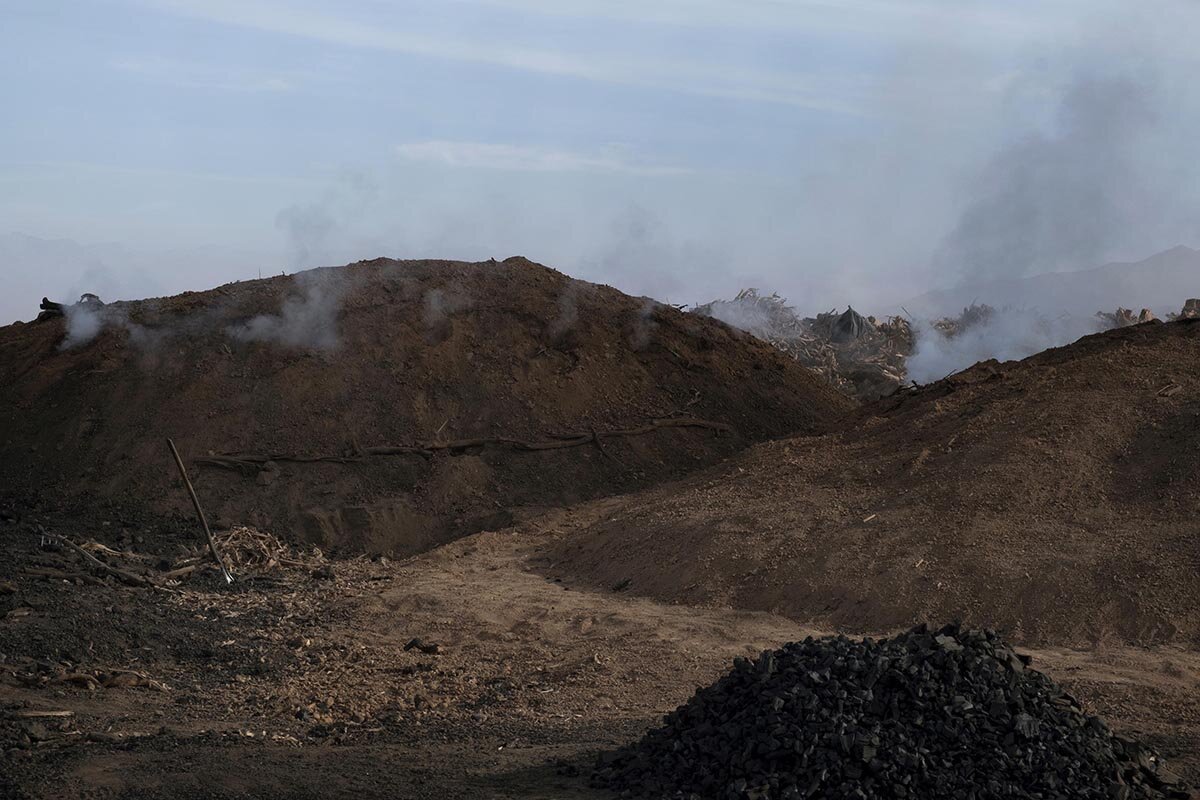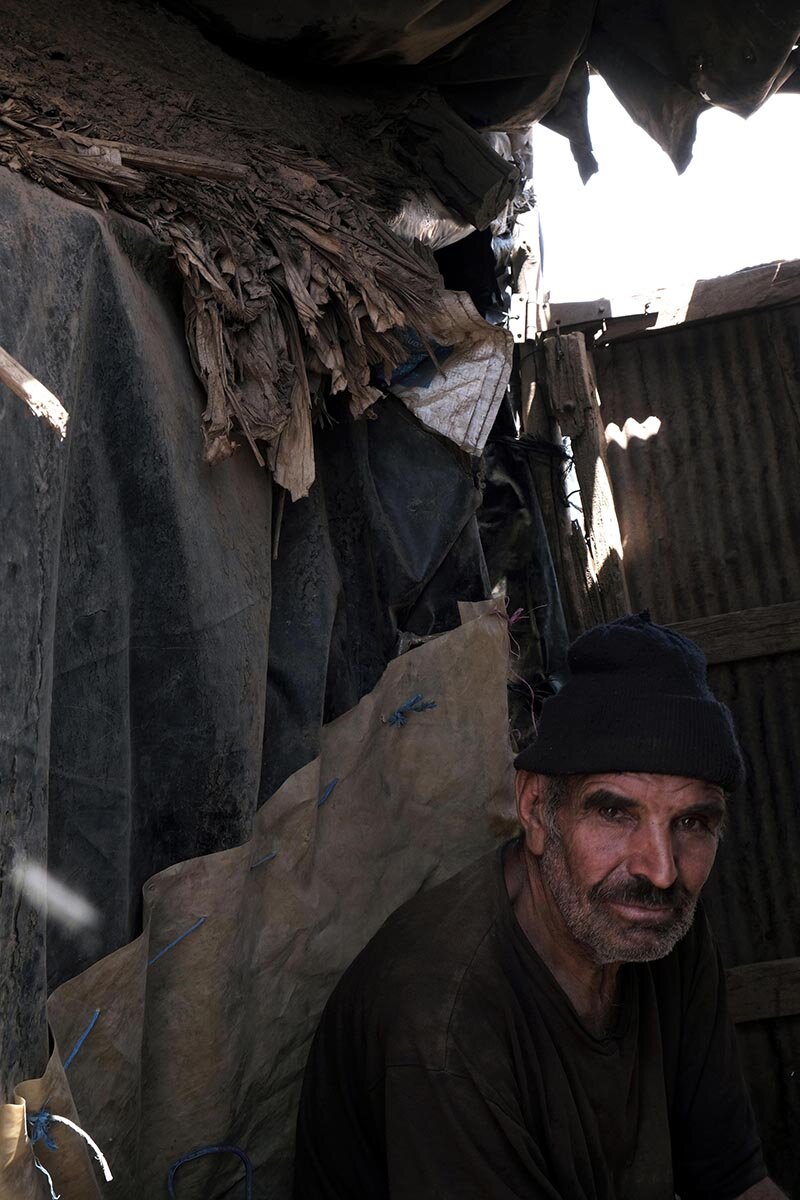La route des Charbonniers
MOROCCO
It’s called “the Charcoal Road”… The first time I took this road, which crosses a desolate landscape in South Morocco, I was stunned by this immense plain where smoke emanated everywhere, as far as the eye could see… an unreal and disturbing landscape.../ Read More >
When I stopped, Habib, who would become the main character of my story, came and told me, proudly, about his job.
It was his appearance that struck me first:
His face, his hands and his arms, all black with soot and dust, his lack of teeth, his blind eye, his ragged clothes and mismatched socks, the holes in his sandals, smoking cigarette after cigarette, and his cough, deep and regular.
It was a journey back in time, and I spontaneously thought of Eugene Smith’s photo of three Welsh miners in the 1950s… that was the trigger. I decided to testify about the life of these men. This rough, precarious, dangerous life, this marginal life. This profession exists only in this isolated region of Morocco and will soon disappear...
The region is rich in citrus groves, lemon and orange trees, the most suitable wood for charcoal. Trucks deposit huge tree trunks that the charcoal burners then have to cut and re-cut. The kiln (an earthen mound in which the wood burns) is constructed according to a precise, ancestral ritual. Then it takes two to three weeks for the wood to turn into charcoal, a specific point before it completely consumes itself.
That is why the charcoal burners must live on the spot, each being responsible for several kilns, which must be monitored day and night. These men live in miserable conditions, in makeshift tents of plastic and sheeting. One 10kg bag of charcoal sells for 6 dirhams (0.60 cents euros).




















